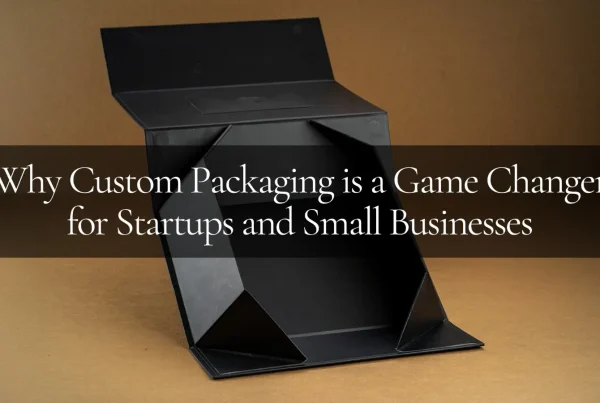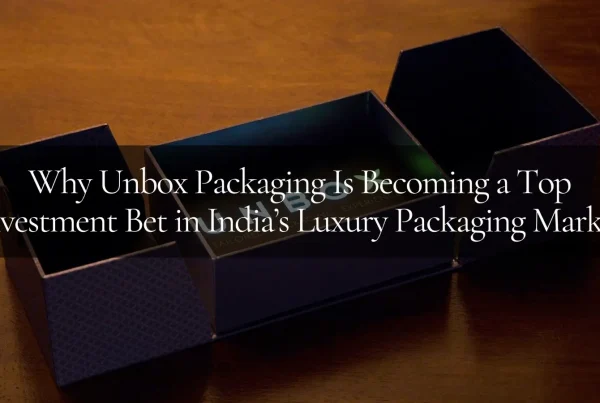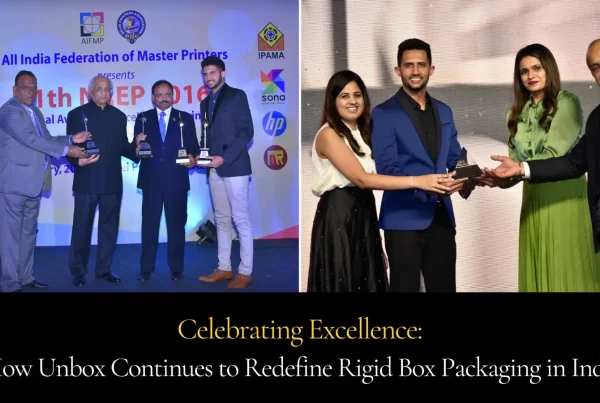In today’s competitive business landscape, standing out from the crowd is essential for a brand’s success. One way companies are achieving this is through unique packaging box designs that leave a lasting impression on consumers. Understanding the importance of packaging design and its role in marketing is crucial for businesses that want to make their mark. Additionally, exploring elements of memorable packaging designs and staying abreast of innovative packaging design trends allows brands to create a lasting impression. This article will delve into all of these aspects, providing insights and inspiration for businesses seeking to enhance their packaging designs.
Understanding the Importance of Packaging Design
Packaging design is much more than just a mere container for a product. It serves as a powerful marketing tool that can communicate a brand’s identity and message to consumers. Moreover, packaging design influences consumer behavior, playing a significant role in their purchasing decisions.
When it comes to packaging design, every element is carefully considered to create a cohesive and impactful visual representation of the brand. From the choice of colors, materials, and typography to the placement of logos and images, each aspect plays a crucial role in capturing the attention of consumers and conveying the brand’s values.
The Role of Packaging in Marketing
Packaging is an integral part of a product’s marketing strategy. It acts as a visual representation of the brand and helps establish its identity in the market. Packaging not only protects the product but also serves as a medium to convey crucial information about the product’s features and benefits. A well-designed package can attract attention and generate interest, ultimately leading to a sale.
In addition to its marketing functions, packaging also plays a vital role in differentiating a product from its competitors. By creating a unique and memorable packaging design, brands can stand out on the shelves and create a lasting impression on consumers, increasing the likelihood of repeat purchases.
How Packaging Influences Consumer Behavior
Consumer behavior is significantly influenced by packaging design. The visual appeal of a package, coupled with its functionality, can create a sense of desirability and evoke emotions in potential buyers. The packaging design can convey a sense of luxury, affordability, or eco-friendliness, depending on the target audience and brand positioning. Understanding the psychology behind consumer behavior can help shape packaging design choices effectively.
Moreover, packaging design can also impact the perceived value of a product. A well-designed package can enhance the perceived quality of the product inside, making consumers more willing to pay a premium price. By creating a positive first impression through packaging, brands can build trust and loyalty with their customers, leading to long-term success in the market.
Elements of a Memorable Packaging Design
Creating a memorable packaging design requires careful consideration of various elements. Colors, typography, and material choices all play a crucial role in capturing consumers’ attention and connecting with them on a deeper level.
When it comes to packaging design, every detail matters. From the shape of the package to the finish of the material, each element contributes to the overall impression it leaves on consumers. The tactile experience of holding a well-designed package can evoke a sense of luxury or playfulness, depending on the intended brand image.
The Power of Color in Packaging
Color is a powerful tool in packaging design. Different colors evoke different emotions and can help convey the brand’s message effectively. Bold and vibrant colors can create excitement, while soft and muted tones may evoke a sense of calm. Understanding color psychology and its impact on consumer perception is essential in choosing the right color palette for packaging design.
Furthermore, color consistency across different product lines can help establish brand recognition and create a cohesive visual identity. When consumers see consistent colors used in packaging, they are more likely to associate those colors with a specific brand, enhancing brand recall and loyalty.
Typography and Its Impact on Design
Typography plays a significant role in packaging design as well. Fonts can convey different feelings and associations, from elegance to informality. Choosing the right typeface and font size can enhance the overall design and make the packaging easy to read and understand.
Moreover, typography can be used to highlight key information such as product benefits, usage instructions, or brand storytelling. By strategically using typography, designers can guide consumers’ attention and create a hierarchy of information that enhances the packaging’s functionality.
Material Choices for Sustainable Packaging
In today’s environmentally conscious world, sustainable packaging is gaining momentum. By choosing eco-friendly materials and promoting sustainable practices, brands can appeal to consumers who prioritize environmentally responsible options. Exploring materials like recycled paper, biodegradable plastics, and natural fibers can help create packaging designs that align with sustainability goals.
Additionally, incorporating sustainable materials into packaging design can communicate a brand’s commitment to environmental stewardship. This transparency can build trust with eco-conscious consumers and differentiate the brand in a crowded marketplace, showcasing its dedication to both quality products and sustainable practices.
Innovative Packaging Design Trends
Staying up-to-date with the latest packaging design trends is essential for brands looking to make a lasting impression. Innovative concepts such as minimalist packaging designs, interactive packaging, and eco-friendly trends are gaining popularity among consumers.When it comes to packaging design, staying ahead of the curve is crucial for brands seeking to captivate their target audience. In addition to the well-established trends like minimalist designs, interactive packaging, and eco-friendly solutions, there are a few emerging concepts that are making waves in the industry. One such trend is personalized packaging, where brands tailor the packaging to individual customers, adding a unique touch to each product delivery. This customization not only enhances the unboxing experience but also fosters a sense of connection between the consumer and the brand.
Minimalist Packaging Designs
Simplicity is a growing trend in packaging design. Minimalist designs with clean lines and limited text create an elegant and sophisticated look. This approach allows the product to speak for itself and emphasizes the brand’s commitment to simplicity and functionality.
Moreover, in the realm of minimalist packaging, the use of negative space is gaining prominence. By strategically incorporating empty spaces within the design, brands can draw attention to specific elements of the packaging, creating a sense of balance and harmony. This design technique not only conveys a sense of modernity but also ensures that the product remains the focal point of the packaging.
Interactive Packaging Concepts
Interactive packaging engages consumers on a more experiential level. Incorporating elements such as pull tabs, hidden compartments, or augmented reality features can create a memorable unboxing experience for customers, increasing brand engagement and loyalty.
Furthermore, the integration of smart packaging technology is revolutionizing the way brands interact with consumers. By incorporating features like QR codes that provide product information or NFC tags for easy reordering, brands can enhance the functionality of their packaging while also collecting valuable data on consumer behavior and preferences. This data-driven approach not only improves the overall customer experience but also enables brands to make informed decisions to drive future product development.
Eco-friendly Packaging Trends
As sustainability becomes a primary concern for consumers, eco-friendly packaging designs are gaining traction. Using compostable materials, reducing excess packaging, or incorporating refillable options are some ways brands can demonstrate their commitment to the environment.
Additionally, the concept of upcycling in packaging design is gaining momentum as brands seek innovative ways to reduce waste and promote sustainability. By repurposing materials or using recycled elements in their packaging, brands can not only minimize their environmental impact but also appeal to eco-conscious consumers who prioritize sustainability in their purchasing decisions. This shift towards more sustainable practices not only benefits the planet but also positions brands as responsible corporate citizens dedicated to making a positive impact on the world.
Creating a Lasting Impression with Your Packaging
Aligning Packaging Design with Brand Identity
An effective packaging design should be aligned with a brand’s overall identity. Consistency in design, colors, and typography helps create a cohesive brand experience. When packaging design reflects a brand’s values and personality, it can have a lasting impact on consumers and foster brand loyalty.
Packaging that Tells a Story
Telling a story through packaging design can captivate consumers’ attention and create an emotional connection. Incorporating visuals, symbols, or narratives can evoke curiosity and encourage consumers to engage further with the brand.
The Role of Unboxing in the Consumer Experience
In today’s digital era, the unboxing experience has gained significant importance. Brands can elevate the consumer experience by designing packaging that surprises and delights. Attention to detail, personalized touches, and incorporating shareable elements can amplify the brand’s reach through social media and word-of-mouth.
Imagine receiving a beautifully designed package in the mail. As you carefully open it, you are greeted with a personalized note from the brand, expressing their gratitude for your purchase. The packaging itself is a work of art, with intricate patterns and embossed details that make it stand out. You can’t help but feel a sense of excitement and anticipation as you uncover the carefully wrapped product inside.
But the experience doesn’t end there. As you continue to explore the packaging, you discover a small booklet that tells the story behind the brand. It shares their journey, their values, and the inspiration behind their products. Suddenly, you feel a deeper connection to the brand, as if you’ve become a part of their story.
Overall, exploring unique packaging box designs that make a lasting impression is an essential endeavor for businesses aiming to differentiate themselves. By understanding the importance of packaging design, considering elements of a memorable design, staying abreast of innovative trends, and creating a packaging experience that aligns with the brand’s identity, businesses can leave a lasting impression on consumers and elevate their market position.




